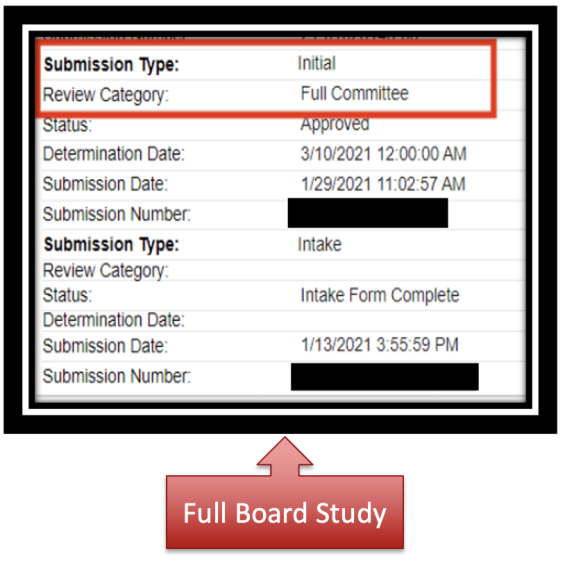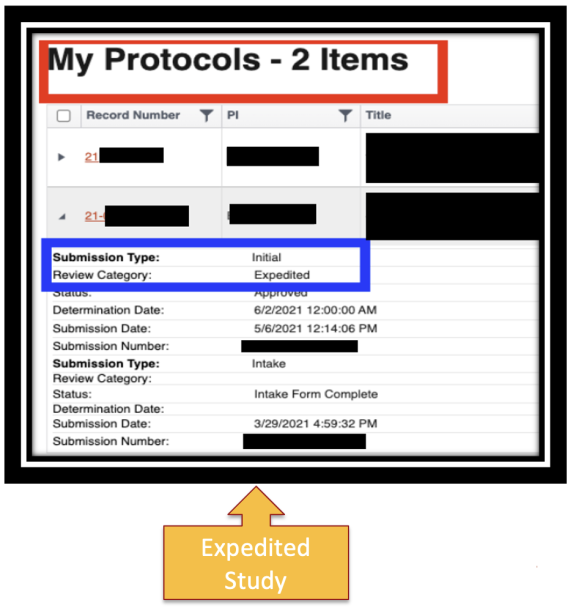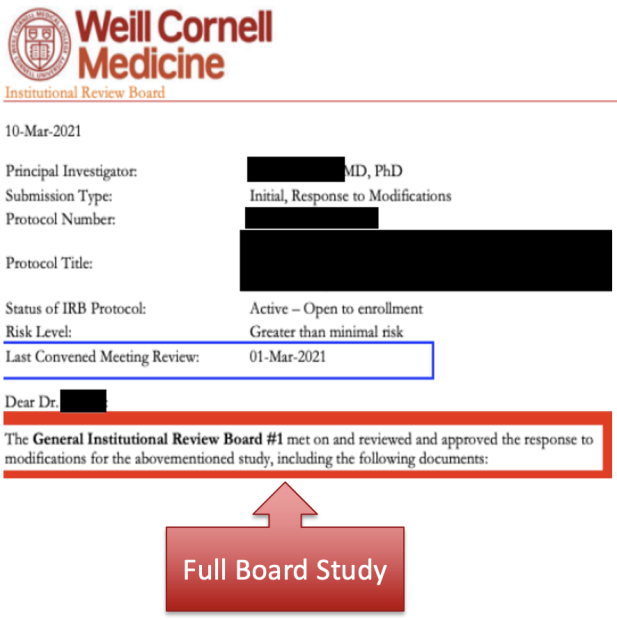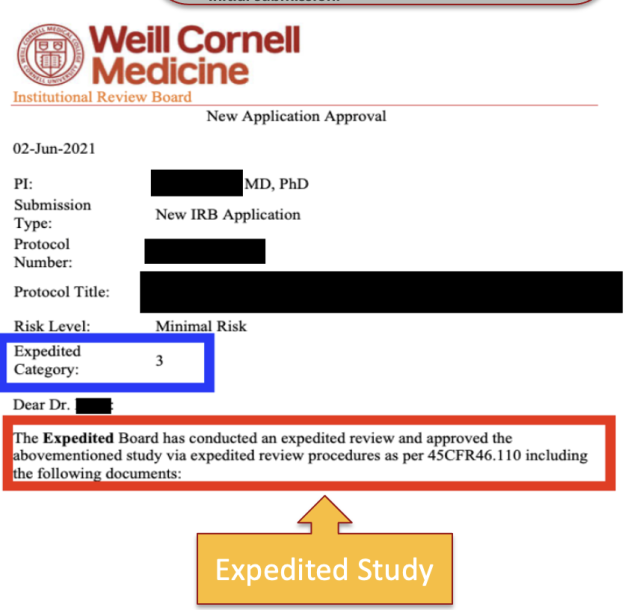
All new human subjects research must be reviewed by the IRB prior to the commencement of any study activity. The purpose of the information below is to assist WCM faculty, staff, and students who are planning to conduct studies that involve human subjects. If you have a question that is not addressed here please reach out to us at irb@med.cornell.edu so we can help!
The WCM IRB utilizes an electronic submission system, Weill Research Gateway (WRG) - Human Subjects, for all study application submissions; WRG is the central hub for research administration activity:
For information on the IRB's submission system, WRG-HS, refer to the FAQ and Knowledge Base (KB). For technical support, email wrg-support@med.cornell.edu.
Read about recent new features and updates from the WRG-HS Sprint 5 release and the WRG-HS Sprint 4 release.
We have prepared the PI Checklist: Submitting an IRB Application as a helpful tool to get you started on your IRB submission process. We also invite you to watch our METS presentation on this topic, available on our Monthly Education and Training Series page.
The Study Activation Status Page (SASP) is a dashboard where you can monitor a set of tasks and required activities which need to be completed for each of your study protocols. Depending on the specifics of the research, some requirements are not necessary, while others are always required:
VITTORIO BUGATTI, Translation Coordinator
inlingua Metro New York
551 Fifth Avenue
New York, NY 10176
Telephone: 212.682.8585 email: translationsny@inlingua.com
Your relationship with the IRB does not end once you receive IRB approval for your study! You must maintain approval status by submitting post-approval applications and reports.
Most studies require modifications to keep the investigative team current, to incorporate changes to the protocol, study instruments, or consent form(s). Amendments to approved studies represent the single largest volume of IRB submissions. No changes may be made to the approved research plan without first submitting a request to the IRB and obtaining the IRB's approval, unless there is need to eliminate an immediate hazard facing the subject as outlined in 45 CFR 46.103(b)(4).
When the amendment involves a new study population, new inclusion/exclusion criteria, and new analysis plans, an amendment is no longer appropriate. The investigator should develop a new protocol rather than try to amend an existing one. The IRB strongly prefers that investigators complete their approved study and open a new one rather than trying to amend a previously approved study. If uncertain, consult one of the IRB chairs and discuss the proposed changes. For guidance on when to submit an amendment vs. when to submit a new study, see our guidance document, Amending an Existing Protocol vs. Submitting a New One.
All modifications to research must be approved by the IRB prior to implementation, except when necessary to eliminate apparent immediate hazards to the human subjects.
WCM ITS provides a helpful video on how to amend your protocol.
Amendments can be more complicated and harder for the IRB to review than initial submissions. It takes attention to detail, on the investigator's part, to fully explain the changes that are proposed, the reasons for those changes and to ensure that all of the applicable study documents consistently incorporate the proposed changes throughout.
Amendment fail to obtain IRB approval during their initial review due to the following:
Careful review of each revised document prior to submission can prevent unnecessary delays.
The WCM IRB requires investigators to report certain events or circumstances that occur during the conduct of a study, including situations where participants experience unanticipated or anticipated problems during the course of the research study. There are specific reporting timelines; familiarizing yourself with the requirements will help in avoiding non-compliance.
At the time of approval, the WCM IRB will determine if and when the approval will expire. it is the investigator's responsibility to either apply for a new approval period (i.e. submit a continuing review application) or submit a study closure before the IRB approval expiration date.
The typical progression of a submission through the IRB application process begins when the Investigator submits an Initial Application in the WRG-HS system. That then sets off a number of processes that must be complete before IRB analyst review.
We provide a detailed description of the IRB review process for your reference.
There are several different paths your initial WRG Human Subjects (WRG-HS) submission can take after you create a new study protocol (ex: submitting an initial IRB application vs. an amendment or continuing review). Viewing the Submission Progress will map out the steps your submission will go through specific to the IRB and PRMC review processes, providing insight into what steps you need to take. You can check this progress by following the below steps:
For more information about alternative ways to check the progress of your submission, as well as the difference between parallel vs sequential view, please refer to the Knowledge Base (KB) article.
Please note that the Submission Progress indicator is only available for submissions created on or after March 28, 2020.
There are several different paths your initial WRG Human Subjects (WRG-HS) submission can take after you create a new study protocol (ex: submitting an initial IRB application vs. an amendment or continuing review). Viewing the Submission Progress will map out the steps your submission will go through specific to the IRB and PRMC review processes, providing insight into what steps you need to take. You can check this progress by following the below steps:
For more information about alternative ways to check the progress of your submission, as well as the difference between parallel vs sequential view, please refer to the Knowledge Base (KB) article found here.
Please note that the Submission Progress indicator is only available for submissions created on or after March 28, 2020.




The following may delay the release of an IRB approval letter and documents:
Study team members should also check the Study Activation Status Page (SASP) for their study to ensure all applicable approvals are obtained PRIOR to starting human research activities. The SASP page is your "one-stop" location for all required approvals.